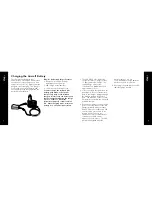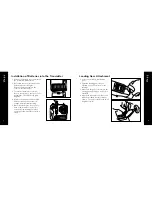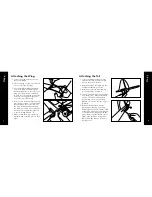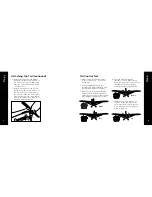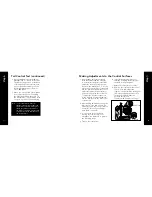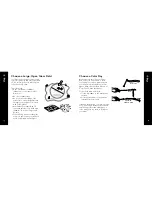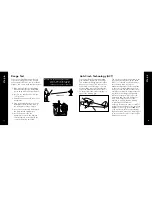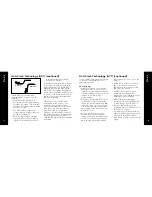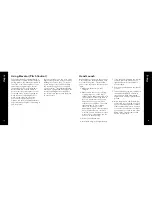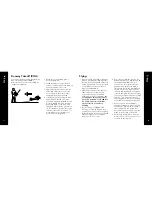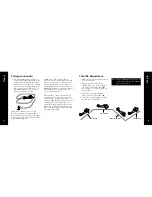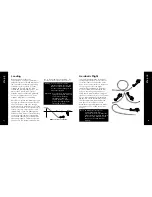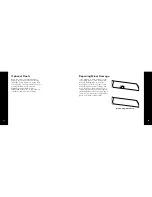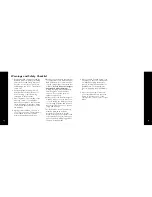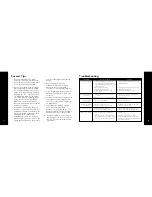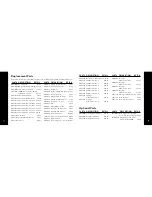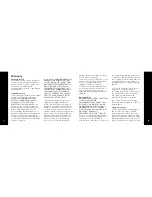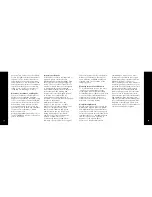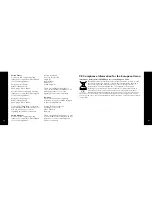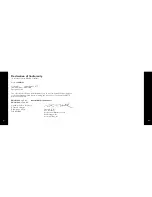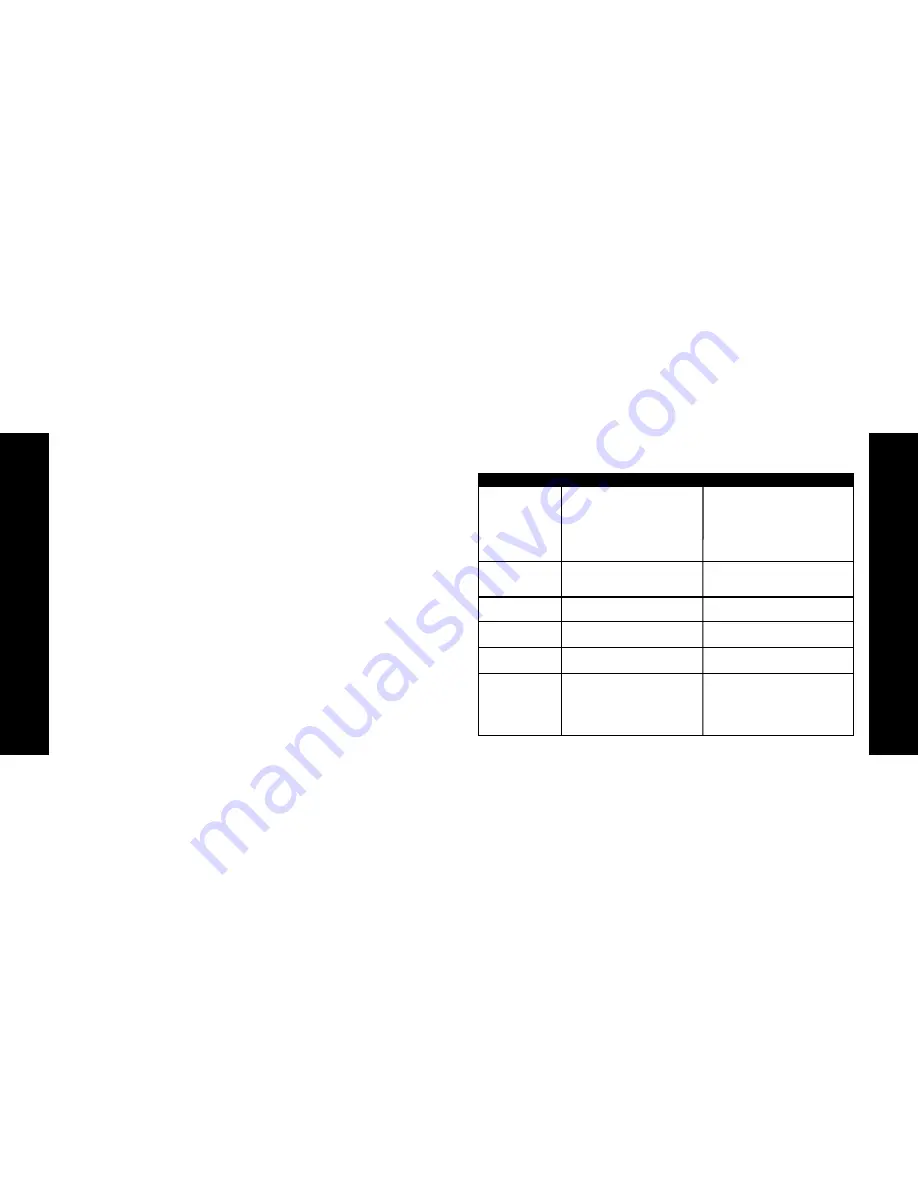
31
32
Troubleshooting
Unit does not operate
1. Transmitter AA batteries are depleted
or installed incorrectly as indicated by a
dim or unlit LED on the transmitter or the
low battery alarm
2. No electrical connection
3. Flight battery is not charged
4. Crash has damaged the radio inside
the fuselage
1. Check polarity installation or replace with
fresh AA batteries
2. Push connectors together until they click
3. Fully charge the battery
4. Replace the fuselage or receiver
Aircraft keeps turning in
one direction
1. Rudder or rudder trim is not adjusted
correctly
2. Wing is not centered over the fuselage
1. Adjust stick trim lever or adjust rudder
position (see page 14)
2. Center the wing
Aircraft is difficult
to control
1. Wing or tail is damaged
1. Replace damaged part
Aircraft keeps pitching
up steeply
1. Wind is too gusty or strong
2. Elevator is trimmed 'up' too much
1. Postpone flying until the wind calms down
2. Adjust elevator trim 'down'
Motor cuts in and out
1. ACT is on (make sure it is intended to
be on)
2. ACT is on but due to reflective surfaces
and dark sky, ACT is not working correctly
3. ACT is on, and sun is low on the horizon
Aircraft won't climb
1. Battery is not fully charged
2. Elevator may be trimmed 'down'
1. Charge battery fully shortly before flying
2. Adjust elevator trim 'up' (see page 14)
1. Turn ACT off
2. Turn ACT off and if ACT is needed,
postpone flying until conditions improve
3. Turn ACT off, and postpone using ACT until
sun is higher in the sky
PROBLEM
POSSIBLE CAUSE
SOLUTION
Success Tips
gently to level flight and level the
wings.
4. Don’t attempt to fly or do
maneuvers beyond your flying
abilities without seeking the
assistance of an experienced pilot.
5. If you’re gliding with the motor off,
allow the Super Cub LP more area
for turns.
6. Position yourself at your flying field
to keep the sun at your back and
out of your eyes. Wear sunglasses
on bright days.
7. Keep the Super Cub LP upwind,
especially on windier days, to
prevent it from “flying away.” The
wind is normally stronger at higher
altitudes than it is on the ground.
8. Keep your plane in front of you so
you don’t have to turn in circles as
you fly. Try to avoid flying directly
overhead.
1. Don’t fly in winds over 7 mph
(11km/h). First-time pilots should
get help from an experienced radio
control pilot during first flights.
2. Choose your flying field carefully—
grass and soft ground with a 600-
foot (183-meter) diameter of open
space is optimal for flying and will
lengthen the life of the Super Cub
LP. Make sure there are no obsta-
cles that will get in your way when
flying, such as trees or buildings.
Make sure you do not fly where
there are pedestrians who could be
hurt by the airplane.
3. Remember that holding the stick
full over for too long can cause the
airplane to spiral dive and crash. At
the very first sign of the Super Cub
LP beginning to spiral down,
immediately release the stick and
give the opposite turn control to the
spiral, then pull back on the elevator

